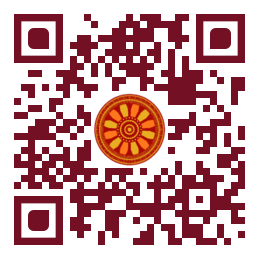
:: International Transaction Journal of Engineering, Management, & Applied Sciences & Technologies
http://TuEngr.com

ISSN 2228-9860
eISSN 1906-9642
CODEN: ITJEA8
FEATURE PEER-REVIEWED ARTICLE
Vol.12(2) (2021) |
Impacts of Operation Conditions on the Performance of the Fired Heater
 Roaa Rashid Ali, Amjed Ahmed Ali, and Adnan Abdullah Ateeq (Department of Fuel and Energy Engineering, Southern Technical University, IRAQ).
Roaa Rashid Ali, Amjed Ahmed Ali, and Adnan Abdullah Ateeq (Department of Fuel and Energy Engineering, Southern Technical University, IRAQ).
Disciplinary: Fuel and Energy Engineering, Furnace Engineering, Sustainable Energy Engineering.
doi: 10.14456/ITJEMAST.2021.40
Keywords: Furnace optimization; HYSYS; Heat simulation; Furnance operation; Dynamic mode.
AbstractSimulation of the process of the fired heater located in the south of Iraq is conducted utilizing Aspen HYSYS. The simulation shows a perfect agreement with the datasheet of the fired heater. Different parameters in the case study examine their effect on the performance of the fired heater and improve the performance. The results report decreasing the flow rate of inlet hot oil maintains almost as equal as the value of outlet temperature of hot oil in the practical results. Reduction of fuel flow rate is showed reducing the temperature of the fuel gas and emission of carbon dioxide. Thus, reducing the flow rate could be worth doing to obtain a clean and safe environment. Also, such a reduced flow rate maintains the temperature of outlet hot oil close to the desired temperature.Paper ID: 12A2S
Cite this article:
Ali, R. R., Ali, A. A., and Ateeq, A. A. (2021). Impacts of Operation Conditions on the Performance of the Fired Heater. International Transaction Journal of Engineering, Management, & Applied Sciences & Technologies, 12(2), 12A2S, 1-9. http://doi.org/10.14456/ITJEMAST.2021.40
References
- Al-Lagtah, N.M.A., S. Al-Habsi, and S.A. Onaizi. (2015). Optimization and performance improvement of Lekhwair natural gas sweetening plant using Aspen HYSYS. Journal of Natural Gas Science and Engineering, 26, 367-381.
- Arachchige, P. R., U.S. and M.C. Melaaen. (2012). Aspen Plus Simulation of CO2 Removal from Coal and Gas Fired Power Plants. Energy Procedia, 23, 391-399.
- Cala, O. M., Merino, L., Kafarov, V., & Saavedra, J. (2015). Evaluation of combustion models for determination of refinery furnaces efficiency. Ingeniare. Revista chilena de ingenier?a, 23(3), 429-438.
- Ditaranto, M., R. Anantharaman, and T. Weydahl. (2013). Performance and NOx Emissions of Refinery Fired Heaters Retrofitted to Hydrogen Combustion. Energy Procedia, 37, 7214-7220.
- Feldbauer, S. (2009). Furnace Optimization; Meeting the Need to Reduce Costs. Heat Treat. Prog, 25-28.
- Fialova, D. and Z. Jegla, (2019). Analysis of Fired Equipment within the Framework of Low-Cost Modelling Systems. Energies, 12(3).
- Garg, A. (1997). Optimize fired heater operations to save money. Hydrocarbon Processing, 76, 97-112.
- Garg, A., & Ghosh, H. (1988). Good heater specifications pay off. Chem. Eng, 95(10), 77-80.
- Garg, A. (2004). Get the Most From Your Fired Heater. Chemical Engineering, 111(3), 60-65.
- Gunasegran, S., & Azarpour, A. (2016). Numerical Analysis of Influential Parameters on the Performance of Vertical-Cylindrical Refinery Furnaces. Procedia Engineering, 148, 963-969.
- HYSYS, A., (2014). Fired Heater (Furnace). Manual of Aspen HYSYS.
- Ibrahim, H. A. H., & Al-Qassimi, M. (2008). Matlab program computes thermal efficiency of fired heater. Periodica Polytechnica Chemical Engineering, 52(2), 61-69.
- Ibrahim, H. A. H. (2010). Fired process heaters. Matlab-Modeling, Programming, and Simulations, 327-364.
- Ibrahim, H. A. H., & Al-Qassimi, M. (2010). Simulation of heat transfer in the convection section of fired process heaters. Periodica Polytechnica Chemical Engineering, 54(1), 33-40.
- Ibrahim, H. A. H., & Al-Qassimi, M. M. (2013). Calculation of radiant section temperatures in fired process heaters. Chemical Engineering and Science, 1(4), 55-61.
- Khodabandeh, E., Pourramezan, M., & Pakravan, M. H. (2016). Effects of excess air and preheating on the flow pattern and efficiency of the radiative section of a fired heater. Applied Thermal Engineering, 105, 537-548.
- Platvoet, E., & Baukal, C. (2013). Process burners 101. Chemical Engineering Progress, 109(8), 35-39.
- Salih, M. A. H., Mohammed, A. A. A., Khalifa, B. Y., Elamin, F. O., & Hassan, N. O. (2018). Evaluation of the Efficiency of the Combustion Furnace of the Delayed Coking Unit by Manipulating the Parameters that Affect the Furnace Efficiency. American Journal of Quantum Chemistry & Molecular Spectroscopy, 2(2), 18-30.
- Sutton, I. (2017). Common Hazards. In Plant Design and Operations, 509-534.
- Sutton, I. (2017). Equipment and Buildings. In Plant Design and Operations, 73-137.
- Tiwari, L. M., Parikh, S. P., Gampawar, M., & Choudhary, P. (2018). Designing and mathematical simulation of cylindrical and box type fired heater (used for heating of coke oven gas). International Journal of Advance Research, Ideas & Innovations, 2037-2045.
- Wildy, F. (2000). Fired heater optimization. AMETEK Process Instruments, 1-12.
Other issues:
Vol.12(2)(2021)
Vol.12(1)(2021)
Vol.11(16)(2020)
Vol.11(15)(2020)
Vol.11(14)(2020)
Archives
Call-for-Papers
Call-for-Scientific PapersCall-for-Research Papers: ITJEMAST invites you to submit high quality papers for full peer-review and possible publication in areas pertaining engineering, science, management and technology, especially interdisciplinary/cross-disciplinary/multidisciplinary subjects.
To publish your work in the next available issue, your manuscripts together with copyright transfer document signed by all authors can be submitted via email to Editor @ TuEngr.com (no space between). (please see all detail from Instructions for Authors)
Publication and peer-reviewed process:
After the peer-review process (4-10 weeks), articles will be on-line published in the available next issue. However, the International Transaction Journal of Engineering, Management, & Applied Sciences & Technologies cannot guarantee the exact publication time as the process may take longer time, subject to peer-review approval and adjustment of the submitted articles.